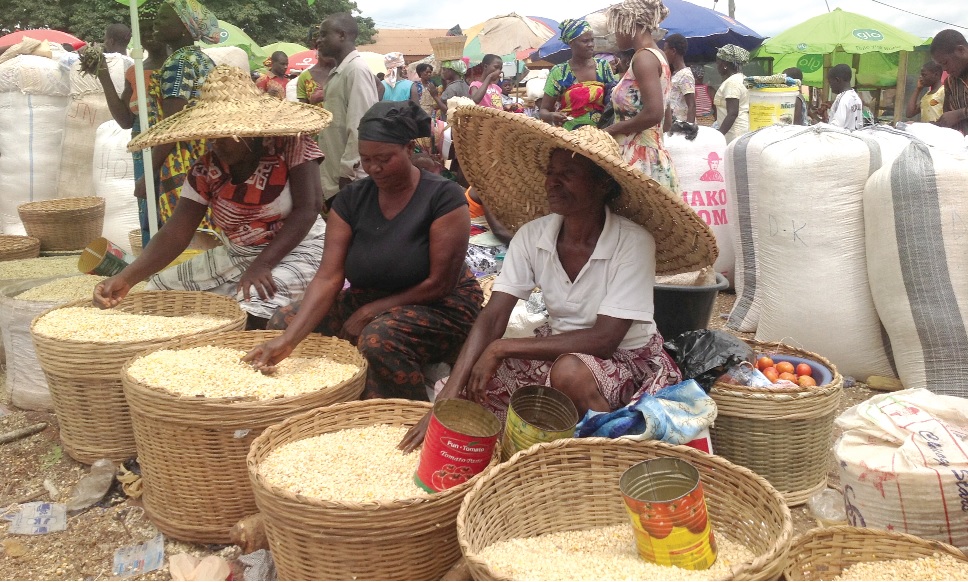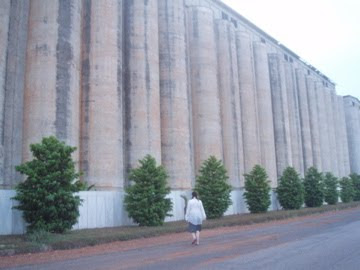
An agricultural report on Joy News public engagement program dubbed Scorecard where the the Akufo-Addo government’s 23 months in office was scrutinised.
A farmer who is predicting an abundance of maize in the coming year is unhappy about his own forecast. The abundance will go waste, Christian Marfo gave another prediction only more ominous.
Ghana’s post-harvest culture is still not up to scratch. And so Ghanaians would have to embrace the good news of abundance and then get ready for a human-engineered period of waste.
Ghana loses more than 318,500 tonnes of maize annually to post-harvest losses according to a 2016 study. Or put is more imaginably 63.7million bags of maize gone waste. If these bags were given out for free to each of Ghana’s 27 million citizens, each would take home two bags.
Maize represents the second largest commodity crop in the country after cash crop cocoa. It accounts for more than 50% of total cereal production in the country.
It is a lifeline for many below the poverty line and those in the line of poultry production, maize is another lifeline, providing feed for livestock.

“If I don’t get maize for 150,000 birds, they will die” a poultry farmer once said in May 2018 when the shortage of staple was reported.
And so when government launched the Planting for Food and Jobs program in April 2017, the potential impact of the policy was obvious – food and jobs.
Christian Marfo was full of praise for the program. Almost full of praise.
With his farms around the Ejura, Atebubu, Sekyre Odumase areas, he said he has seen the program actually wipe out armed robbery.
“The program has been impactful to be honest with you”, he said on Joy News Scorecard where the nearly two-year-old Akufo-Addo government was under assessment.

Marfo said one farmer who planted 1,000 acres of maize and 500 acres of sorghum had to employ 300 people to manage his farms.
Crime just dropped and with it dropping food prices, he indicated.
“A whole bag of carrot is going for 50 cedis”, the farmer said. “A whole bag of eggplant is going for 10cedis”, a revelation that drew a gasp of shock from the audience at the Labadi Beach hotel in Accra.
But he lamented that for farmers, the reward for the abundance is that prices will be determined by buyers and farmer would have to cave into the low prices offered otherwise their goods will perish.
Marfo was at pains to stress, government urgently needs to build storage and processing facilities.
A Deputy Minister for Food and Agriculture Dr Sagre Bambangiwas was on hand to provide assurances. “We are working. We are addressing our post-harvest challenges” he said.
He revealed 30 warehouses with 1,000 metric tonne capacity each. Some 50 more warehouses are also going through procurement processes, he said.

Photo: Dr Sagre Bambangi is MP for Walewale Constituency in the Northern region and a former lecturer at University for Development Studies.
Construction of silos while an obvious solution was once controversial under Kwame Nkrumah. His government built silos with a potential storage capacity of 200,000 tonnes atTema.
This is much more spacious than the combined 80 silos government is still trying to construct. Nkrumah’s silos were built at a cost of 8.5 million British pounds.
One of the silos was a colossal concrete structure reaching 10-storeys into the sky. Within its vast bowels are 14 compartments with a grain storage capacity of 1,000 metric tonnes each.
The complex giant 10-storey grain silos are the tallest storey buildings in the immediate harbour area built by Nkrumah’s government as part of the Tema Food Complex Corporation (TFCC) project.
It was to store cocoa for the world leader in the cash crop and also stockpile grains for national food sufficiency and security.

Photo: Silos at Tema harbour: Credit: nonjeneregretterien.blogspot.com
Political opposition, the World Bank and foreign interests heavily criticised the construction. One foreign report on Dr. Nkrumah’s industrialisation plan post-independence era said;
“Nkrumah went on a massive spending spree, building roads, houses, schools, hospitals, factories, steelworks, mining ventures and the largest dry dock in Africa that was rarely ever used. He built the Akosombo Dam and a hydroelectricity power plant on the Volta River at the expense of the spread of endemic river blindness”.
The silos project was eventually abandoned. The storage facility is heavily infested with rodents.
Some 51 years after the silos were constructed, they still stand tall while government ’s post-harvest storage capacity falls short.
Read Full Story















Facebook
Twitter
Pinterest
Instagram
Google+
YouTube
LinkedIn
RSS